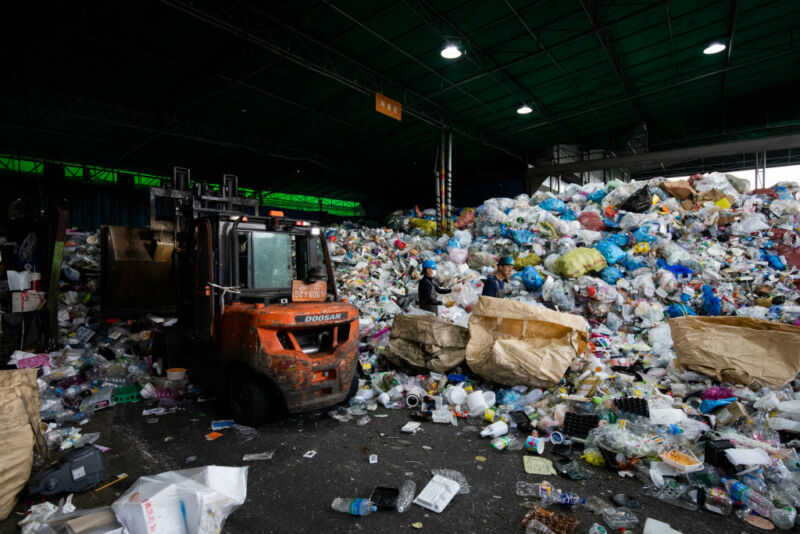
A few years back, it looked like plastic recycling was set to become a key part of a sustainable future. Then, the price of fossil fuels plunged, making it cheaper to manufacture new plastics. Then China essentially stopped importing recycled plastics for use in manufacturing. With that, the bottom dropped out of plastic recycling, and the best thing you could say for most plastics is that they sequestered the carbon they were made of.
The absence of a market for recycled plastics, however, has also inspired researchers to look at other ways of using them. Two papers this week have looked into processes that enable "upcycling," or converting the plastics into materials that can be more valuable than the freshly made plastics themselves.
Make me some nanotubes
The first paper, done by an international collaboration, actually obtained the plastics it tested from a supermarket chain, so we know it works on relevant materials. The upcycling it describes also has the advantage of working with very cheap, iron-based catalysts. Normally, to break down plastics, catalysts and the plastics are heated together. But in this case, the researchers simply mixed the catalyst and ground up plastics and heated the iron using microwaves.
Like water, iron absorbs microwave radiation and converts it into heat. This causes the heat to be focused on the site where catalytic activities take place, rather than being evenly spread throughout the reaction.
The difference is striking. Compared to traditional heating, the microwave heating released over 10 times as much hydrogen from the plastic, leaving very little other than pure carbon and some iron carbide behind. Better yet, the carbon was almost entirely in the form of carbon nanotubes, a product with significant value. And it all happened extremely quickly, with hydrogen being released less than a minute after the microwaves were applied. The process was completed in less than two minutes.
Although some of the iron ended up being linked to carbon, this didn't inactivate the catalyst. The researchers found that they could mix in more ground-up plastic and start the process over again, repeating it up to 10 times in their tests, although hydrogen production was clearly dropping by cycle 10. On the plus side, the later cycles produced almost pure hydrogen, as contaminants like oxygen and water had been removed by the earlier cycles. And, at the end of 10 cycles, the carbon-rich material was 92-percent nanotubes by weight.
The only thing that's missing from the work is an indication of how easy it would be to reform the iron into iron oxide, the catalytic form of the material.
We’ll take that hydrogen
If you were at all worried about what to do with that hydrogen, a US-based group has a potential answer. The group was also concerned about the problems the other researchers saw when they simply heated a catalyst and plastic together: the results were a complicated mix of chemicals, rather than the two clean products seen when rapid heating was done using microwaves. But this team looked to biology for possible solutions.
Enzymes digest polymers all the time. And, in many cases, they produce clearly defined products by chewing the polymer from one end, releasing one subunit of the polymer at a time. Typically, this works because the polymer fits into a slot on the surface of the enzyme that includes the catalytic site, and the enzyme moves along it, advancing as each reaction removes a piece of the polymer. It should be possible, the researchers reasoned, to make an artificial catalyst that works in similar ways.
To do so, the researchers created a silicon oxide surface with lots of pores, then placed a platinum catalyst at the base of each pore. In the right solvent, long plastic polymers would have a higher affinity for the surface of the silicon oxide and thus attach themselves to the surface. From there, a number would inevitably enter the pore and end up running into the catalyst. Thus, the catalyst would get the chance to act on one end of the polymer only, rather than running into it at some random location in the middle of the chain.
Feed Read More – Source [contf] [contfnew] 
arstechnica
[contfnewc] [contfnewc]







